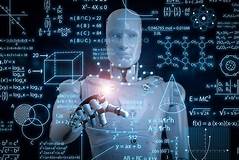The term machine learning (ML) as a part of artificial intelligence is ubiq-
uitous nowadays. The term is used for a wide number of various appli-
cations and methods that deal with the “generation of knowledge from
experience”.
The well-known US computer scientist Tom Mitchell defines machine
learning as follows:
A computer program is said to learn from experience E with respect to
some class of tasks T and performance measure P, if its performance at tasks
in T, as measured by P, improves with experience E (Mitchell 1997).
An illustrative example of this would be a chess computer program that
improves its performance (P) in playing chess (the task T) by experience
(E), by playing as many games as possible (even against itself ) and analysing
them (Mitchell 1997).
Machine learning is not a fundamentally new approach for machines to
generate “knowledge” from experience. Machine learning technology was
used to filter out junk e-mails a long time ago. Whilst spam filters that tack-
led the problem with the help of knowledge modelling had to constantly be
adapted manually, ML algorithms learn more with each e-mail and are able
to autonomously adapt their performance accordingly.
Besides the fields of responsibility defined in the previous section, with
machine learning, different ways of learning are differentiated from each
other.
The most common will be discussed in the following:
Supervised Learning
Supervised learning proceeds within clearly defined limits. Besides the actual
data set, the right possible answers are already known. The supervised learn-
ing methods are meant to reveal the relationship between input and out-
put data. These methods are used for tasks in the fields of classification as
well as regression analyses. Regression is about predicting the results within
a continuous output, which means that an attempt is made to allocate input
variables to a continuous function. With the classification, in contrast, an
attempt is made to predict results in a discreet output, i.e. allocate input var-
iables to discreet categories.
The forecast of property prices, for example, based on the size of the
houses, would be an example for a regression problem. If, instead of that, we
forecast whether a house will cost more or less than a certain price depend-
ing on its size, that would be a categorisation, where the house would be
placed in two discreet categories according to the price.
Unsupervised Learning
In contrast to supervised learning, with unsupervised learning, the system
is not given target values labelled in advance. It is meant to autonomously
identify commonalities in the data sets and then form clusters or compro-
mise the data. As a rule, it is about discovering patterns in data that humans
are unaware of.
Unsupervised learning algorithms can, for example, be used for customer
or market segmentation or for clustering genes in genetic research, to reduce
the number of characteristic values. With the help of this compression, com-
puting could be faster afterwards without loss of data.
Reinforcement Learning
An alternative to unsupervised learning is provided by the models of rein-
forcement learning where learning patterns from nature are reproduced in
concepts. Through the combination of dynamic programming and super-
vised learning, problems that previously seemed to be unsolvable can be
solved. Differently to unsupervised learning, the system does not have an
ideal approach at the beginning of the learning phase. This has to be found
step by step by trial and error. Good approaches are rewarded and steps
tending to be bad are sanctioned with penalisation. The system is able to
incorporate a multitude of environmental influences into the decisions
made and to respond to them. Reinforcement learning belongs to the field
of exploration learning, where a system autonomously, thus irrespective
of the rewards and penalties pointing in the right direction, has to find its
own solutions that can be clearly differentiated from those thought up by
humans. Reinforcement learning attracted a notable amount of attention
after the victory of Google DeepMind’s AlphaGo over Lee Sedol. The system
used applied deep reinforcement learning among others to improve its strat-
egy in simulated games against itself. Through reinforcement learning, arti-
ficial intelligences thus acquire the ability to find new approaches on their
own and to at least seemingly act intuitively

Comments
Post a Comment